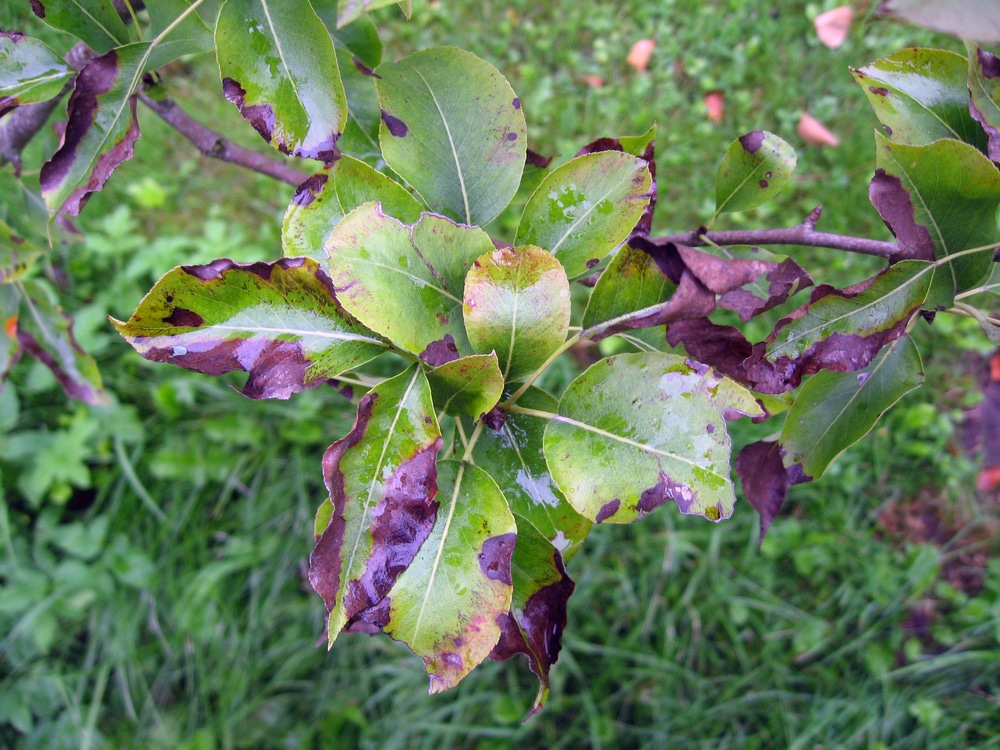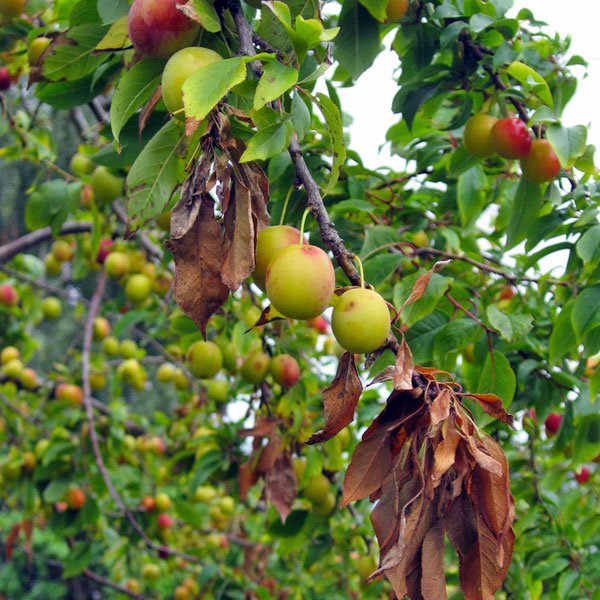

The point of pruning must be 12 to 16 inches beyond the last visible signs of the disease on the branch. Repeat the spray at one to two month intervals, more frequently in high disease situations. To improve the binding and penetration for the fungicide applied it with Nature's Own Spray Helper or Pentra-Bark (call for details). Shortly after bud break, spray the tree with Agri-Fos Systemic Fungicide, ensuring thorough coverage. To control or prevent fire blight, in the early spring, before bud break, spray the tree with Liquid Copper Fungicide to reduce or eliminate any bacterial spores that are overwintering on the bark. Recommended Steps to Control Fire Blight: (I saw other random pear-family trees in the neighborhood that turned totally black that year, and now appear to have died.) Last year the fire blight was minor and much fruit was set, but it all dropped very early in the year for reasons unknown. Fertilization Vigorous shoots are more susceptible to fire blight, so if blight is a problem, use little or no fertilizer. Fire blight usually shows up as the end of the twig wilting suddenly, then turning brown and black, curling up like a fish hook. It could be due to drought, root injury, trunk injury, etc. If fire blight becomes a serious problem, prune sparingly since the vigorous shoots stimulated by pruning cuts are usually more susceptible to fire blight. That symptom is leaf scorch, which is caused by a lack of water reaching the leaves. If left untreated, Fire Blight will gradually infect the entire tree, block the tree’s vascular system and kill it. Two years ago it got a case of fire blight that blackened half the tree. Thin crowded shoots as needed to allow light penetration into the tree. As the branch is infected, the leaves begin to brown and blacken and appear almost burnt, hence the name fire blight.Īs the disease advances and the fungus reproduces, it begins to block the tree’s vascular system and causes branch die back or cankers to develop as the bacteria expands and “bursts out” of the tree’s bark.

Once the blossom or leaf is infected, the bacteria spreads quickly throughout new tender growth, but slows as it reaches more mature woody growth. Trees are very vulnerable to Fire Blight infections immediately after heavy rains or hail storms where leaf tissue is exposed from rips and physical damage. During the damp spring period the disease is spread by rain, improper pruning and insects such as honeybees which transmit the bacterial infection from blossom to blossom. The bacteria overwinters on or under infected bark and in the early spring begins to ooze out. It is most prevalent on the following trees: apple, pear, hawthorn, cotoneaster, firethorn and mountain ash. Fire Blight is a bacterial infection caused by the Erwinia amylovora bacteria.


 0 kommentar(er)
0 kommentar(er)
